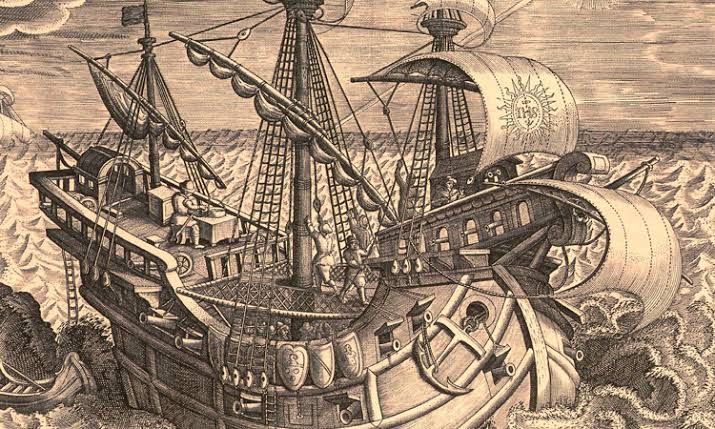Acapulco: The Resplendent Port of La Nao de China and its Historical Legacy
Nestled in the embrace of the Pacific Ocean on Mexico's radiant southwest coast, Acapulco shines as a city with an illustrious past. Today, this city is not only famed for its gleaming beaches and energetic nightlife but for its vibrant history as the centerpiece of global trade in

Nestled in the embrace of the Pacific Ocean on Mexico's radiant southwest coast, Acapulco shines as a city with an illustrious past. Today, this city is not only famed for its gleaming beaches and energetic nightlife but for its vibrant history as the centerpiece of global trade in the 16th century. This bustling port was the pulsating heart of "La Nao de China," also known as the Manila Galleon Trade, an extensive trade network that connected the most influential nations of the time for over 250 years.
The Uninterrupted Traffic of the Manila Galleon
During this era, Acapulco and Veracruz, two key Mexican ports, played an instrumental role in maintaining flourishing commercial traffic between Europe, America, and the Far East. This period existed long before current maritime powers - England, Japan, and the United States - had even dreamed of venturing into the vast expanse of the Pacific Ocean. The "Nao de la China," thus, was the main protagonist of the uninterrupted traffic, making Acapulco a significant player in international trade due to its privileged geographical position.
It can be confidently stated that from the mid-16th century to the early 19th century, the Philippine Islands were more of a Mexican colony than a Spanish one. Their only contact with Spain was through Mexico, upon whom they were dependent, both administratively and economically. The islands were part of the Viceroyalty of New Spain, and their economy was deeply entwined with the Mexican silver and Galleon trade.
The Most Productive Commercial Exchange of Its Time
During these 250 years, the most productive commercial exchange of its time took place, with New Spain projecting itself not only as an importing nation but also as an exporter of goods and culture. When the Philippine archipelago was incorporated into the Spanish empire, trade between Asia and Mexico blossomed through the new colony.
Millions of Mexican eight-real coins, or "pesos," were loaded onto galleons in Acapulco and spread to East Africa and the coasts of Asia, especially China. This Mexican peso, minted to circulate in the Philippines, became the metallic currency with the most extensive circulation in global trade at the time. This trade greatly benefited China, which received a substantial amount of silver, a resource it lacked.
A Resounding Cultural Exchange
From Acapulco, the "Nao" transported not just silver but also coffee, vanilla, sugar, officials, missionaries, and soldiers. From Manila, it returned laden with spices, silks, porcelain, and ivory. This trade led to a rich cultural exchange, as customs and traditions traveled aboard those galleons and took root in both Mexico and the Philippines.
In New Spain, cockfighting with blades, fireworks, and cut paper became customary. On the other hand, books and printing presses brought Western and Christian culture to the Philippines. Interestingly, the Spanish language spoken in parts of the Philippines today is Mexican Spanish, preserving many Mexican idioms.
The Legacy of La Nao de China
Goods from Asia arrived in Manila to be shipped to Acapulco. Once in this Mexican port, they were transferred to Veracruz and from there, sent to Spain. This vital route ended in 1813 when the Courts of Cadiz issued a decree suppressing the traffic of "La Nao de China". This decree was implemented in Mexico two years later, marking the end of an era when, in March 1815, the last "Manila Galleon" set sail into the sunset.
Yet, despite the passage of time, Acapulco's role as a linchpin of the Manila Galleon Trade left an indelible mark on the city's cultural and economic fabric.
Echoes of the Past in Modern Times
The echoes of this grand era reverberate in Acapulco even today. The city’s historical district bears the architectural hallmark of its colonial past, while its modern luxury resorts such as Banyan Tree Cabo Marques encapsulate the fusion of influences that have shaped Acapulco over the centuries.
The signing of the T-MEC (Tratado México, Estados Unidos y Canadá), regulating commercial operations between the three most critical countries in North America, stirs nostalgia for a time when Mexico was a vital hub in international trade due to the Manila Galleon Trade. If implemented with a spirit of justice and equity, this agreement could significantly contribute to the region's economic progress, reminiscent of the prosperity that the Manila Galleon Trade once brought to Acapulco.
A Lasting Legacy
Despite the evolving trade relationships and the passage of centuries, the Manila Galleon Trade's legacy continues to shape Acapulco's vibrant culture, unique cuisine, and cosmopolitan spirit. Once a gateway for the treasures of the Orient, the city continues to welcome visitors with open arms, inviting them to partake in its captivating history and experience its enduring charm.
Thus, Acapulco remains a glittering gem on the Pacific coast - a testament to its vibrant past and a beacon for its promising future. The "Nao de China" might have ceased its voyages, but the ripples it created continue to influence the heart of Acapulco, reminding us of a time when the city served as a pivotal nexus in a global tapestry of trade, culture, and human interaction.




